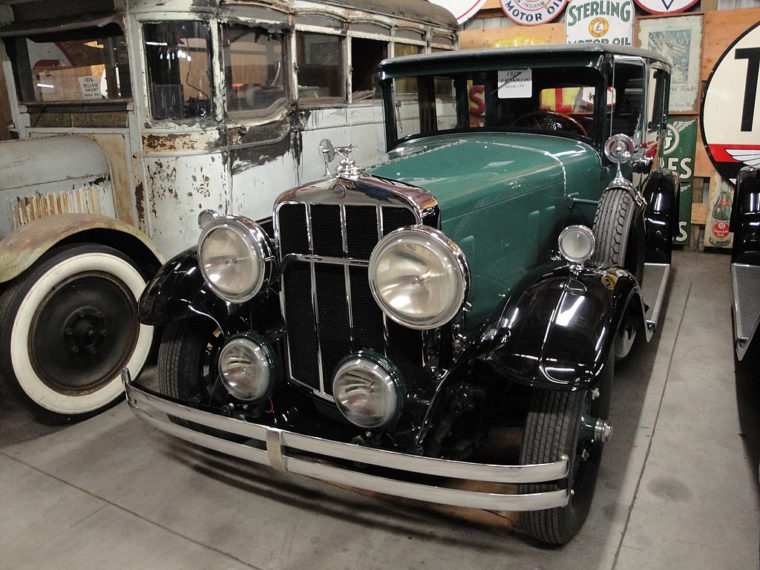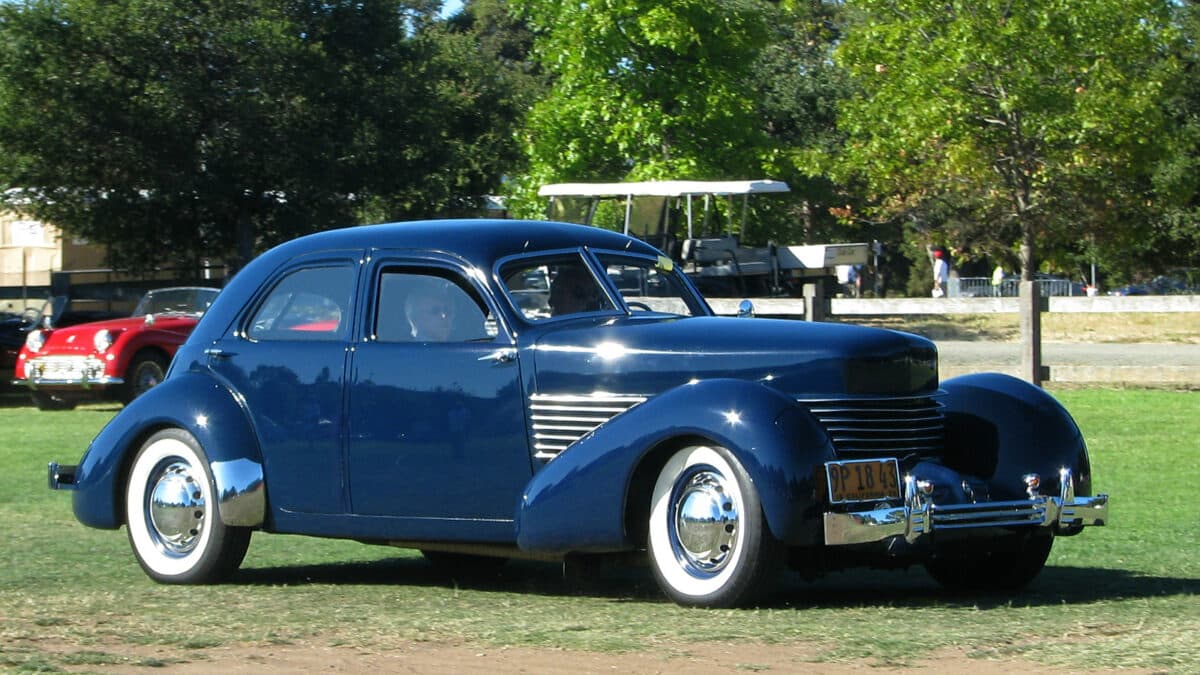
Every industry suffered during the Great Depression, and automakers were no exception. While the big three — Ford, GM, and Chrysler — survived and thrived in the aftermath of economic hardship, other companies couldn’t adapt to the era’s rapidly changing demands. Many companies collapsed, and these defunct automakers have been completely forgotten by most modern drivers. Here’s a look at a few American marques that went extinct during the Great Depression.

Back in 1929, Errett Lobban Cord’s auto company pushed innovative technology and streamlined aesthetics. These ideas left a mark on all of Cord’s products, which included Stinson aircraft, Lycoming engines, and Checker taxicabs. Cord even introduced the first front-wheel drive vehicle sold on the American market.
His design philosophy was out in full force on Cord’s 810 — which featured a long and low design, concealed headlamps, and a “coffin nose” front end. Inside, it boasted an aircraft-inspired instrumentation panel with the first-ever edge-lit instrumentation. Although it boasted a beefy-for-its-time 125-horsepower Lycoming V8, the 810 couldn’t outrun its reliability issues. Only 1,174 of these classic cars were ever made. Cord shut down in 1937, and while its models saw a brief resurgence in 1940, the automaker remains defunct. Collectors still treasure Cord cars to this day.

1929 Franklin Model 135
Franklin got off to a good start in 1893. Herbert H. Franklin set up shop in Syracuse, New York, and pioneered the first machine die-casting business in the world. In 1901, Franklin developed the air-cooled engine, and within a year, he incorporated it into an automobile.
This innovative engine quickly became a favorite with gangsters. Cops would try to stop cars by shooting out the radiator — but since Franklin’s air-cooled cars had no radiator, they could take a few more bullets.
Skipping ahead to 1930, Franklin was going toe-to-toe with premium marques like Cadillac. Always trying to keep ahead in the luxury car arms race, Franklin introduced a mighty 12-cylinder engine in 1932 — but that wasn’t the best move in the midst of the Great Depression. Franklin only made 200 of the 12-cylinder models, then folded in 1934.

1912 Locomobile Model 48
The Locomobile got its name from a portmanteau of “locomotive” and “automobile.” That’s because the Locomobile started off in 1898 with steam-powered cars, although it later joined the gas-powered crowd in 1902.
The Locomobile made history when it beat Fiat, Isotta, and Mercedes cars at the Vanderbilt Cup race, marking the first time America took home the trophy at the international event. As a result, interest in Locomobile soared, and by 1911, it gained a reputation of being the “Best Built Car in America,” boasting enthusiastic celebrity drivers like Cecil B. DeMille, William Wrigley, Charlie Chaplin, and, of course, the Vanderbilts.
Locomobile’s manufacturing processes emphasized quality over quantity. It only produced four cars per day, each built to order. The lead mechanic would even lend a personal touch, stamping his initials on the main bearing cap while assembling the engine.
Sadly, Locomobile shut its doors in 1929, shortly after the stock market crashed. Because of the scrap metal drives during World War II, many Locomobiles were melted down. Today, collectors prize every last surviving Locomobile as an icon of a bygone era.
Sources: Car and Driver, Locomobile Society, Daily Kos
Kimiko Kidd is a native Daytonian. She graduated from Wright State University with degrees in environmental science and sociology. She loves her trusty old Honda Civic, but dreams of owning a 1974 Ford Falcon XB with a custom paint job and a vintage Kawasaki Z1000. In her free time, Kimiko can be found watercolor-painting, baking muffins, collecting rocks, playing old-school Nintendo games, writing her novel, sewing stuffed animals, and cosplaying as her favorite Mad Max characters. See more articles by Kimiko.



